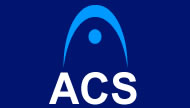 |
 |
 |
 |
 |
 |
 |
 |
 |
 |
 |

 |
|
| |
ACS, Inc. |
| |
5830 South 142nd Street |
| |
Suite B |
| |
Omaha, NE 68137 |
| |
|
| |
|
|
|
 |
 |
 |
| |
 The Medical Plan Management and Performance Report (MedMAP) is a quarterly report that measures the performance of your
group medical plans. The report is both comprehensive and decision-oriented. In addition to detailed statistics on your
plan’s experience, we provide observations about areas of interest and concern that should be considered in the next planning
cycle. The Medical Plan Management and Performance Report (MedMAP) is a quarterly report that measures the performance of your
group medical plans. The report is both comprehensive and decision-oriented. In addition to detailed statistics on your
plan’s experience, we provide observations about areas of interest and concern that should be considered in the next planning
cycle.
The MedMAP reports results for both the current and prior year. The MedMAP then compares the results for these two
periods and reports a year over year trend. Would you like to see the trend by vendor to ensure that your TPAs are performing
as expected? Or by type of service, to make sure that prescription drug costs are not growing too fast? Do you want to monitor
the impact of a current year plan design change to ensure that the desired impact was achieved? The MedMAP satisfies demands
like these.
The MedMAP also provides data for three reporting groups. One group is a subset of your company, which we customize to fit
your needs (examples include hourly workers or participants by vendor). The second group, the Enterprise, measures the
performance for your entire company. The third group is the ACS Benchmark, which includes the plan experience for our entire
block of business – over $1 billion of self-insured claims, and over 300,000 member year exposures. The MedMAP compares the
performance of all three groups, so that you can, for example, pinpoint a specific group of participants that cost you more
than your company average, or discover areas where your company is underperforming your Benchmark peers. In our Executive
Summaries, the results are aggregated so that comparisons can be made to industry surveys as well.
To view sample pages from a MedMAP report, please click on the links below.
Executive Summary
The Executive Summary provides a high level review of your self-insured medical plan performance,
sufficiently general to satisfy your senior management reporting. In the sample report, costs and
trends are calculated for an hourly population of employees (Hourly), the entire company (Company),
and either industry survey data (Survey) or the ACS Benchmark (BM). The report shows results on a per
employee (pepm) and per member (pmpm) basis.
As just one example of the uses of the Executive Summary, notice the highlighted cell in the link,
which shows a 6.3% increase in the Total Plan Cost. The Total Plan Cost is the cost of your medical
plan to both your company and your employees. This is lower than the 9.1% increase in the Company Cost,
also highlighted, which only includes the dollars paid by the company. The conclusion: costs are trending
more rapidly for the company than for the employees.
If the burden of your medical plan costs were shifting more to your company, would you want to know about it?
And would you want to understand why it is happening? The MedMAP will answer these questions and many others.
Please click here to view the sample Executive Summary.
Plan Cost Summary
The Plan Cost Summary shows plan costs by type of service on a pmpm basis. This page includes both the trend from
the prior year and a comparison of the company’s experience to the ACS Benchmark.
In the sample report, notice how the Outpatient Hospital costs experienced the highest year over year trend,
at 10.2%. In contrast, Inpatient Hospital costs increased the least, but they are still almost 20% higher than the
Benchmark. Is the change in In- and Outpatient Hospital cost due to utilization, a few particularly severe claims, or
a change in discount? And why is this company’s Inpatient Hospital cost significantly more expensive than the Benchmark?
Additional exhibits in the MedMAP will drill down into the details and answer these questions.
Please click here to view the sample Plan Cost Summary.
Network Discounts and Usage
This section monitors the network discounts achieved by type of service and by the company’s claim
administrators. In the sample report, notice the significant decrease in the discount for Inpatient Hospital,
from 60.0% in 2005 to 45.0% in 2006. Is this due to a change in provider contracts, a shift of participants to a
less competitive network, or a difference in the distribution of underlying services? The MedMAP will help you
research why this change is occurring.
Please click here to view the sample Network Discounts report.
|
|
|
 |



